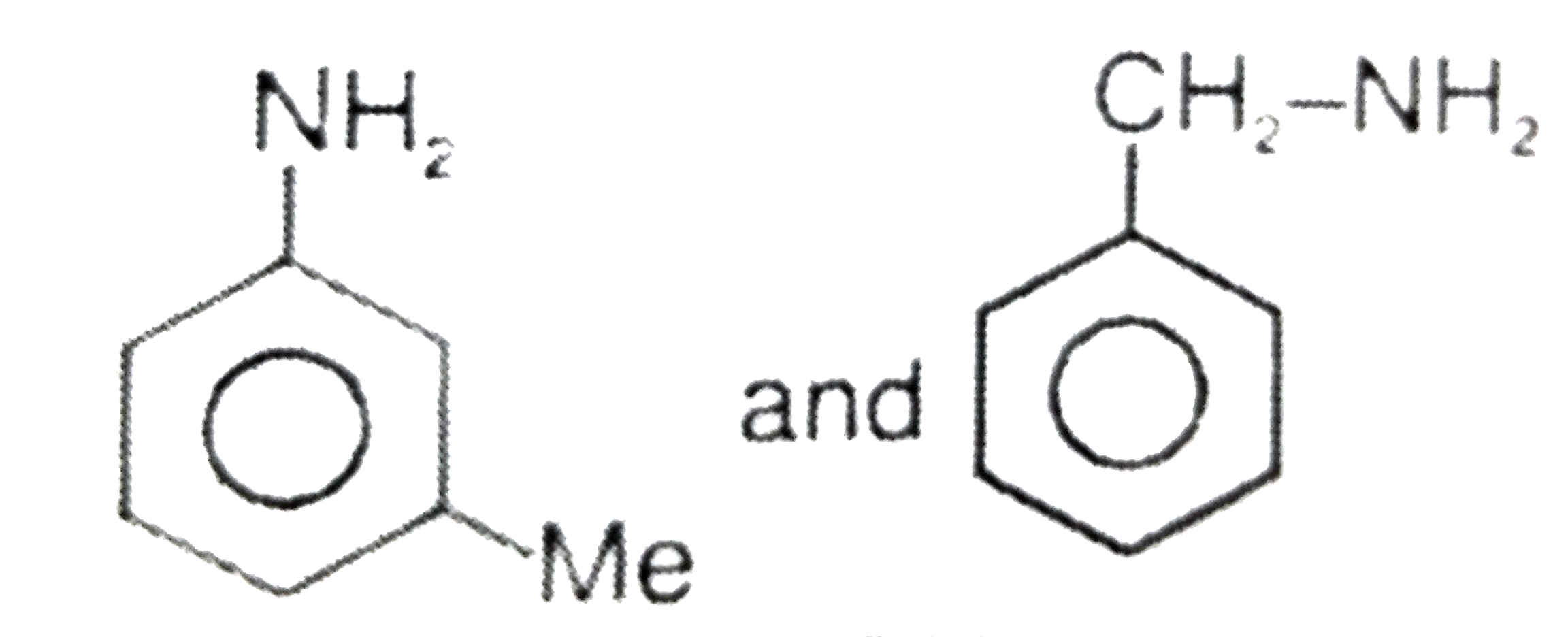But-1-yne and But-2-yne can be distinguished by :
(a)Br2/CCl4
(b)KMnO4/ΘOHaq.(cold)
(c)(AgNO3+NH4OH)
(d)All
The correct Answer is:C
To distinguish between But-1-yne and But-2-yne, we can follow these steps:
Step 1: Understand the Structures
- But-1-yne (1-butyne) has the structure:
CH3−CH2−C≡CH
- But-2-yne (2-butyne) has the structure:
CH3−C≡C−CH3
Step 2: Identify the Reagents
We will use three different reagents to test the two compounds:
1. Bromine in CCl4
2. Potassium permanganate (KMnO4)
3. Silver nitrate (AgNO3) in the presence of ammonium hydroxide (NH4OH)
Step 3: Test with Bromine in CCl4
- When both But-1-yne and But-2-yne are treated with Br2 in CCl4, they will undergo addition reactions.
- The reddish-brown color of bromine will disappear, indicating the addition of bromine to both compounds.
- Conclusion: This reagent does not distinguish between the two compounds.
Step 4: Test with KMnO4
- When both compounds are treated with KMnO4 in a basic medium, they will be oxidized to carboxylic acids.
- Both But-1-yne and But-2-yne will yield similar products (carboxylic acids).
- Conclusion: This reagent also does not distinguish between the two compounds.
Step 5: Test with AgNO3 and NH4OH
- When But-1-yne is treated with AgNO3 in the presence of NH4OH, it reacts to form a white precipitate of silver acetylide:
CH3−CH2−C≡CAg(white precipitate)
- However, But-2-yne does not have an alpha hydrogen available for this reaction, so no precipitate will form.
- Conclusion: This reagent successfully distinguishes between But-1-yne (which gives a white precipitate) and But-2-yne (which does not react).
Final Conclusion
But-1-yne and But-2-yne can be distinguished using AgNO3 in the presence of NH4OH, as But-1-yne will produce a white precipitate while But-2-yne will not.
---
- But-1-yne (1-butyne) has the structure:
CH3−CH2−C≡CH
- But-2-yne (2-butyne) has the structure:
CH3−C≡C−CH3
Step 2: Identify the Reagents
We will use three different reagents to test the two compounds:
1. Bromine in CCl4
2. Potassium permanganate (KMnO4)
3. Silver nitrate (AgNO3) in the presence of ammonium hydroxide (NH4OH)
- When both But-1-yne and But-2-yne are treated with Br2 in CCl4, they will undergo addition reactions.
- The reddish-brown color of bromine will disappear, indicating the addition of bromine to both compounds.
- Conclusion: This reagent does not distinguish between the two compounds.
- When both compounds are treated with KMnO4 in a basic medium, they will be oxidized to carboxylic acids.
- Both But-1-yne and But-2-yne will yield similar products (carboxylic acids).
- Conclusion: This reagent also does not distinguish between the two compounds.
- When But-1-yne is treated with AgNO3 in the presence of NH4OH, it reacts to form a white precipitate of silver acetylide:
CH3−CH2−C≡CAg(white precipitate)
- However, But-2-yne does not have an alpha hydrogen available for this reaction, so no precipitate will form.
- Conclusion: This reagent successfully distinguishes between But-1-yne (which gives a white precipitate) and But-2-yne (which does not react).
But-1-yne and But-2-yne can be distinguished using AgNO3 in the presence of NH4OH, as But-1-yne will produce a white precipitate while But-2-yne will not.
Topper's Solved these Questions
Similar Questions
Knowledge Check
- Question 1 - Select One
2-methyl propene is isomeric with But-1-ene. They can be distinguished by :
ABaeyer's reagentBAmmorical AgNO3CBr2 solutionDO3,Zn/H2O - Question 2 - Select One
1-propanol and 2-propanol can be best distinguished by :
Aoxidation with alkaline KMnO4 followed by reaction with Fehling's solutionBoxidation with acidic dichromate followed by reaction with Fehling's solutionCoxidation by heating with copper followed by reaction with Fehling's solutionDoxidation with conc. H2SO4 followed by reaction with Fehling's solution
Acetaldehyde and acetylene can be distinguished by :
View SolutionGlucose and fructose can be distinguished by
View SolutionH2SandSO2 can be distinguished by
View SolutionMethanol and ethanol can be distinguished by
View SolutionFe2+andFe3+ can be distinguished by
View SolutionProduct(A) and (B)can be distinguished by
 View Solution
View Solution


 can be distinguish by
can be distinguish by